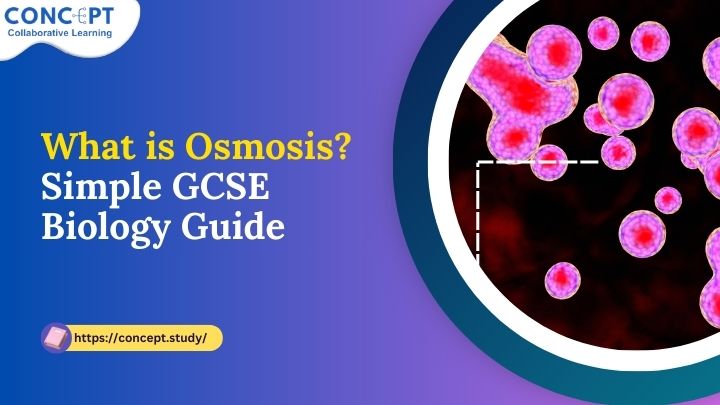
What is Osmosis? Simple GCSE Biology Guide
Introduction to Osmosis
Osmosis is a fundamental concept in GCSE Biology and plays a crucial role in understanding how substances move within and between cells. It’s more than just a definition — it’s the key to explaining how life at the microscopic level functions.
Why Osmosis Matters in GCSE Biology
You might wonder, “Why is osmosis so important?” The truth is, it’s everywhere — from your body’s cells to plants absorbing water through their roots. Mastering osmosis helps you unlock a large part of cell biology and gives you a solid foundation for higher-level science studies.
The Definition of Osmosis
Osmosis is the net movement of water molecules from a region of higher water concentration to a region of lower water concentration through a semi-permeable membrane. That sounds technical, right? Here’s a simpler way to look at it:
Imagine you’re sipping water through a special straw that only lets water in — that’s like osmosis happening in a cell. Guide to Conservation of Energy
Key Components Involved in Osmosis
Water Molecules
Water is the molecule that moves during osmosis. It flows freely when there’s a difference in concentration.
Semi-Permeable Membrane
A barrier that only lets certain molecules pass through, like a sieve for tiny particles.
Concentration Gradient
Water moves from high to low concentration to balance things out – nature’s way of keeping things fair!
Real-Life Examples of Osmosis
- Plant roots absorb water from the soil.
- Red blood cells swell or shrink in different solutions.
- Food preservation, e.g. curing meat in salt–water leaves the meat cells!
Osmosis vs Diffusion: What’s the Difference?
| Feature | Osmosis | Diffusion |
| Substance Moved | Water | Any particles (gas/liquid) |
| Requires Membrane? | Yes, semi-permeable | Not necessarily |
| Direction | High to low water concentration | High to low particle concentration |

Osmosis in Plant Cells
When a plant cell is placed in water:
- Water enters the cell by osmosis.
- The vacuole swells and presses against the cell wall.
- This pressure is called turgor pressure, keeping the plant firm.
Osmosis in Animal Cells
In animal cells, osmosis can cause dramatic changes:
- In pure water, cells swell and burst.
- In salty water, cells shrink as water leaves.
- No cell wall means no protection from bursting!
Investigating Osmosis in a Lab
The Classic Potato Experiment
- Cut equal-sized potato pieces.
- Place them in different concentrations of sugar or salt solution.
- Measure before and after — change in mass = osmosis in action!
Measuring Osmotic Rate
Use timers, scales, and concentration variables to calculate how quickly osmosis occurs. Perfect for exam questions. A Beginner’s Grammar Guide for Kids
Factors Affecting the Rate of Osmosis
- Temperature – higher temp = faster osmosis
- Surface Area – more area = faster movement
- Concentration Gradient – bigger difference = faster rate
- Thickness of Membrane – thinner = quicker movement
Common Misconceptions About Osmosis
- Osmosis is the same as diffusion → Not quite! Osmosis involves only water and a membrane.
- Only plant cells experience osmosis → Wrong! It happens in all living cells.
- Osmosis is active transport → Nope! Osmosis is passive – it doesn’t need energy.
Conclusion
Understanding osmosis unlocks a major part of GCSE Biology. From theory to experiments, it blends science with real-world relevance. So whether you’re acing revision questions or observing them in your experiments, you have this. Enrol now for affordable Online Tutoring UK the best tutoring for Year 1 to GCSE & A level.
FAQs About Osmosis
Q1. Is osmosis the same as diffusion?
No. Osmosis involves water and a semi-permeable membrane, while diffusion refers to any particle movement.
Q2. Why is osmosis important for cells?
It maintains proper water balance, which is crucial for survival.
Q3. What happens to a red blood cell in pure water?
It swells and may burst due to water intake.
Q4. Can osmosis occur in non-living things?
Not really. Osmosis is tied to living membranes like cell walls.
Q5. Is osmosis passive or active?
Passive — it doesn’t require energy.
Q6. How is osmosis used in real life?
From water filters to preserving food — it’s everywhere!
